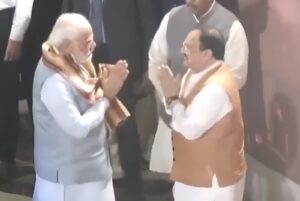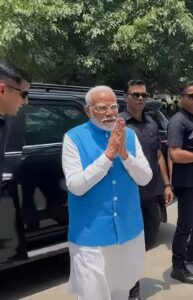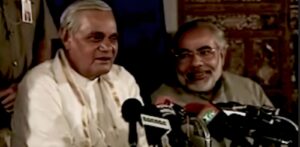The concept of nominated members in the Rajya Sabha was introduced to infuse the House with diverse perspectives beyond the realm of electoral politics. These 12 nominated seats were reserved for individuals of exceptional achievement in fields such as literature, art, science, and social service. The intention was to enhance the intellectual and cultural richness of the Upper House by including eminent personalities many of whom might prefer to avoid the rigors and complexities of the electoral process.
Over time, the character of Rajya Sabha nominations has significantly shifted. Originally intended to honour individuals with exceptional achievements in fields like art, culture, and public service, experts say the process has become increasingly politicised.
According to constitutional expert P.D.T. Achary, the founding vision was to elevate parliamentary debate with non partisan voices. “The first nominations under Nehru were meant to represent excellence, not politics,” he noted. Today, however, even active party leaders are being nominated under the “distinguished” category.
Rajya Sabha Nominations Reflect BJP’s Strategic Shift
The BJP’s recent nominations highlight this shift. Among them is C. Sadanandan Master, a senior RSS leader from Kerala and BJP state vice-president, whose inclusion is seen as a political move ahead of next year’s Kerala polls. His nomination, celebrated by the party, has been criticised by the Congress and CPI(M) for politicising a constitutional provision.
Other recent nominees include lawyer Ujjwal Nikam, historian Meenakshi Jain, and former diplomat Harsh Vardhan Shringla. While all bring expertise, analysts view their selection as part of the BJP’s broader ideological strategy—combining legal firepower, cultural narrative, and geopolitical experience to strengthen its presence in Parliament and beyond.
Over the years, the nature of Rajya Sabha nominations has undergone a significant transformation. What was once a constitutional provision to bring distinguished voices from fields such as art, literature, science, and social service into Parliament has, in recent times, increasingly become a tool for political messaging and party expansion.
Vajpayee’s Vision: Elevating the Rajya Sabha Through Merit and Integrity

During the tenure of Atal Bihari Vajpayee, the process largely reflected the original spirit of the Constitution. Between 1998 and 2003, Vajpayee nominated 11 individuals, most of whom were recognised for their excellence in various fields. These included iconic figures like Lata Mangeshkar, Hema Malini, Dara Singh, economist Bimal Jalan, jurist Fali Nariman, and social worker Narayan Singh Manaklao. While Nanaji Deshmukh and Cho Ramaswamy had ideological leanings, the overall approach avoided overt political calculation. According to a former Union minister, Vajpayee believed nominations should raise the dignity and intellectual standard of the House, not serve party interests.
Similarly, Prime Minister Manmohan Singh, during his two terms, continued the tradition of nominating eminent personalities, including M.S. Swaminathan, Kapila Vatsyayan, Sachin Tendulkar, Rekha, Javed Akhtar, and others from fields like law, academia, business, and media. Though some nominees, like Mrinal Miri or Mani Shankar Aiyar, were close to the Congress leadership, most were chosen for their accomplishments. However, questions were raised over the contribution of some, such as Rekha and Tendulkar, whose poor attendance records drew criticism.
Nominations with a Purpose: How BJP Is Reshaping the Rajya Sabha

The shift became more apparent under Narendra Modi’s leadership since 2014. The Modi government has used Rajya Sabha nominations as part of a larger political strategy picking individuals not just for their achievements but also for their potential to support the BJP’s ideological narrative or social engineering efforts. Early nominations under Arun Jaitley’s influence, such as Roopa Ganguly and Swapan Dasgupta, were aligned with the party’s push in West Bengal. Boxer Mary Kom was chosen for her influence in the Northeast, while nominations like Subramanian Swamy and Ranjan Gogoi had clear ideological and legal significance for the BJP.
Recent picks continue this trend. Religious leader Veerendra Heggade, musicians Ilaiyaraaja and Vijendra Prasad, and Muslim Gujjar leader Ghulam Ali Khatana reflect a strategy to build caste, regional, and religious alliances. Even BJP leaders like Sakaldeep Rajbhar and Sadanandan Master have been nominated under the “eminent” category an approach that breaks with the earlier norm of keeping active politicians out of this space.

Critics argue this undermines the original purpose of the nominated seats. Yet supporters say that even among politically aligned nominees, there are individuals like Sudha Murty and Sonal Mansingh who have actively contributed to parliamentary discussions keeping alive the spirit of excellence, though in a more politically charged context.

